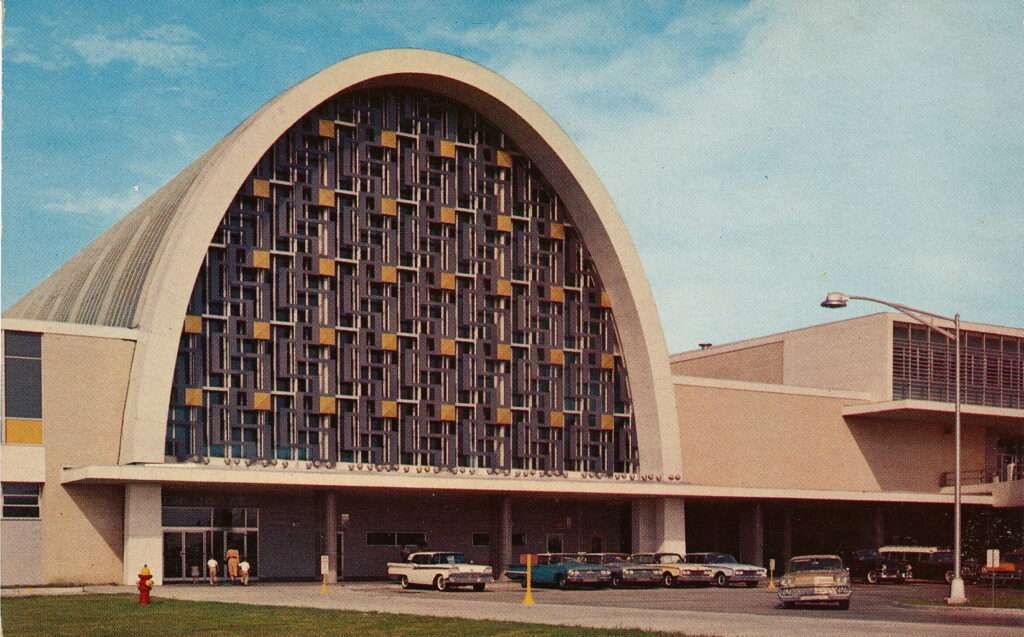The vibrant city of New Orleans, Louisiana, boasts a rich history intertwined with music, culture, and resilience, with their International Airport serving the community.
A key element to this tapestry is the Louis Armstrong New Orleans International Airport (MSY), which has served as a vital gateway for visitors and commerce for over eight decades.
This article explores the evolution of MSY, from its humble beginnings as a military airfield to its current status as a multi-award-winning international hub.
Early Days: Shushan Airport (1934-1946)
The story of MSY begins in the early 1930s with the need for a dedicated air facility in New Orleans. Prior to this, air travel relied on makeshift landing strips.
Recognizing the potential of air transportation, the city purchased a 500-acre plot of land in Kenner, a suburb west of New Orleans.
Construction began in 1934, and the airfield officially opened in 1935 under the name “Shushan Airport,” named after a prominent local businessman involved in the project.
Shushan Airport’s initial offerings were modest.
It consisted of a single runway and a small terminal building. Eastern Air Lines became the first commercial carrier to operate out of Shushan, offering limited flights to Houston and Atlanta.
Despite its basic infrastructure, Shushan Airport played a crucial role in the early development of commercial aviation in the southern United States.
World War II significantly impacted Shushan Airport.

The U.S. Army Air Corps took over the facility in 1942, transforming it into a vital training base for military pilots.
New runways were constructed, and additional buildings were erected to accommodate the increased activity.
Following the war in 1946, the control of the airport transitioned back to the city of New Orleans.
Post-War Growth and Expansion (1946-1970s)
The post-war period witnessed a surge in commercial air travel, and Shushan Airport was no exception.
To meet the growing demand, the city embarked on a series of expansion projects throughout the 1950s and 1960s.

A new terminal building was constructed in 1959, offering expanded passenger amenities and concession areas.
The runway system was further extended to accommodate larger aircraft.
This period also saw the arrival of new airlines at Shushan Airport, fostering increased connectivity to major cities across the United States. National Airlines, Delta Air Lines, and Braniff International Airways all established a presence, offering passengers a wider range of travel options.
In 1967, Shushan Airport underwent a symbolic name change to New Orleans International Airport, reflecting its growing role as a gateway to the region.
The Jet Age and Modernization (1970s-2000s)
The arrival of the jet age in the 1970s necessitated further modernization at New Orleans International Airport.
The existing runway system was upgraded to handle the heavier weight and faster speeds of jetliners.
A new international arrivals building was constructed in 1978 to accommodate the growing number of international flights.

The 1980s and 1990s saw continued growth at New Orleans International Airport.
Airline deregulation in the United States led to increased competition, with new carriers like Southwest Airlines establishing a presence.
The airport also became a hub for several regional airlines, further expanding its reach.
However, tragedy struck in 2005 when Hurricane Katrina devastated New Orleans and the surrounding areas.
The airport sustained significant damage, forcing a temporary closure. A monumental reconstruction effort ensued, with the airport reopening in phases throughout 2006 and 2007.
A New Era: Louis Armstrong Takes Center Stage (2000s-Present)
In 2001, New Orleans International Airport underwent a significant name change, becoming the Louis Armstrong New Orleans International Airport (MSY).
This new moniker paid homage to the legendary jazz musician Louis Armstrong, a native of New Orleans, and further solidified the airport’s connection to the city’s rich cultural heritage.
Following the devastation of Hurricane Katrina, MSY embarked on a period of significant transformation.
A brand new terminal building, designed to be more efficient and passenger-friendly, opened in 2019.
The terminal features modern amenities, local artwork, and a focus on showcasing the unique character of New Orleans.
MSY has also garnered recognition for its exceptional customer service.
In 2021, J.D. Power ranked MSY as the number one large airport in North America for customer satisfaction, a testament to the airport’s commitment to providing a positive travel experience.
Today, MSY continues to be a vital economic engine for the New Orleans region.

Click the banner to subscribe to our weekly newsleter.

Click the photo to join our WhatsApp channel so then you can stay up to date with everything going on in the aviation industry!









